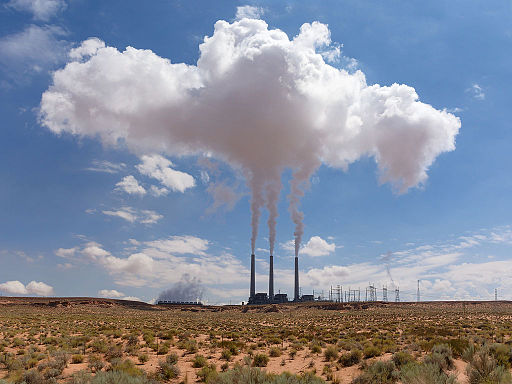Concerned about global warming? Send your thoughts to the EPA and tell Trump that you support the Clean Power Plan.
Submit your comments, identified by Docket ID No. EPA-HQ-OA-2017-0190 at http://www.regulations.gov.
From the U.S. Federal Register website: In accordance with Executive Order 13777, “Enforcing the Regulatory Reform Agenda,” EPA is seeking input on regulations that may be appropriate for repeal, replacement, or modification. Comments must be received on or before May 15, 2017.
(See also Previous comments. "TIPS for effective comments." Proposed EPA cuts. Commentary on Trump's dangerous climate Executive Order.)
To learn more about climate change risk management and the Paris Agreement, watch this discussion by Dr. Jan Dash. Jan Dash is author of Quantitative Finance and Risk Management, A Physicist's Approach and over 60 scientific papers. He is also the Managing Editor for the Climate Portal.
Resources
The Climate Portal has a variety of resources and links for business and climate change. Business, spurred by investors, is waking up to the material risks of climate change. The transition to the huge opportunity of the distributed energy economy is underway. This will mitigate the worst impacts of climate change, if done with all deliberate speed. The future of our grandchildren depends on the success of the renewables transition. The good news is that the renewables train has left the station. The climate contrarians/deniers may try, but they cannot stop it. Have a look. ~ Jan
Business and Climate Change (main page)
****
The Paris Agreement (French: Accord de Paris) is an agreement within the United Nations Framework Convention on Climate Change (UNFCCC) dealing with greenhouse gases emissions mitigation, adaptation and finance starting in the year 2020. The language of the agreement was negotiated by representatives of 195 countries at the 21st Conference of the Parties of the UNFCCC in Paris and adopted by consensus on 12 December 2015. It was opened for signature on 22 April 2016 (Earth Day) at a ceremony in New York. As of April 2017, 195 UNFCCC members have signed the treaty, 144 of which have ratified it. After several European Union states ratified the agreement in October 2016, there were enough countries that had ratified the agreement that produce enough of the world's greenhouse gases for the agreement to enter into force. The agreement went into effect on 4 November 2016.
The head of the Paris Conference, France's foreign minister Laurent Fabius, said this "ambitious and balanced" plan is a "historic turning point" in the goal of reducing global warming.
One year on, the ratification of the Paris Agreement was celebrated by the Mayor of Paris Anne Hidalgo by illuminating the Eiffel Tower and the Arc de Triomphe, Paris' most iconic monuments, in green. (Via Wikipedia)
****
The Clean Power Plan is an Obama administration policy aimed at combating anthropogenic climate change (global warming) that was first proposed by the Environmental Protection Agency in June 2014. It is widely expected to be eliminated under President Donald Trump, who signed an executive order on March 28, 2017 mandating the EPA to review the plan.
Proposed actions under President Trump
President Donald Trump's proposed 2018 United States federal budget defunded the Clean Power Plan. On March 28, 2017, President Trump signed an executive order directing EPA Administrator Scott Pruitt to review the Clean Power Plan. EPA will need to go through the formal rulemaking process to change the existing rule, and in 2007, the U.S. Supreme Court ruled in the case Massachusetts v. Environmental Protection Agency that EPA regulation of carbon dioxide is actually required by the Clean Air Act, which is still in effect. Trump explained this decision calling the Clean Power Plan a "job-killing regulation" which some see as false, saying "the potential for job growth in the clean energy sector dwarfs any potential job growth in the fossil fuel economy".
Opposition argues that with the repeal of the Clean Power Plan, the United States will not be able to meet the greenhouse gas emission standards agreed to under the Paris Agreement, and in turn, will have to withdraw from the agreement. Without it, the United States is projected to fall over 20% short of its pledge. Because the Clean Power Plan was a significant part of how the United States intended to meet the emission targets it set for the Paris Agreement, this action may discourage other countries from upholding their own commitments. Janet McCabe, an Obama Administration EPA department head, stated that the decision completely disregards the impacts of climate and the cost and benefits associated with the started programs. According to her it will lead to several more years of uncertainty and potentially lost opportunity as well as a worsening public image of the United States internationally. However she is hopeful that the decision's impact on the industry's direction toward a cleaner energy system won't be severe as several states already meet the 2022 target carbon dioxide emissions established in the Clean Power Plan. (Via Wikipedia.)

Photo: Myrabella / Wikimedia Commons, via Wikimedia Commons



